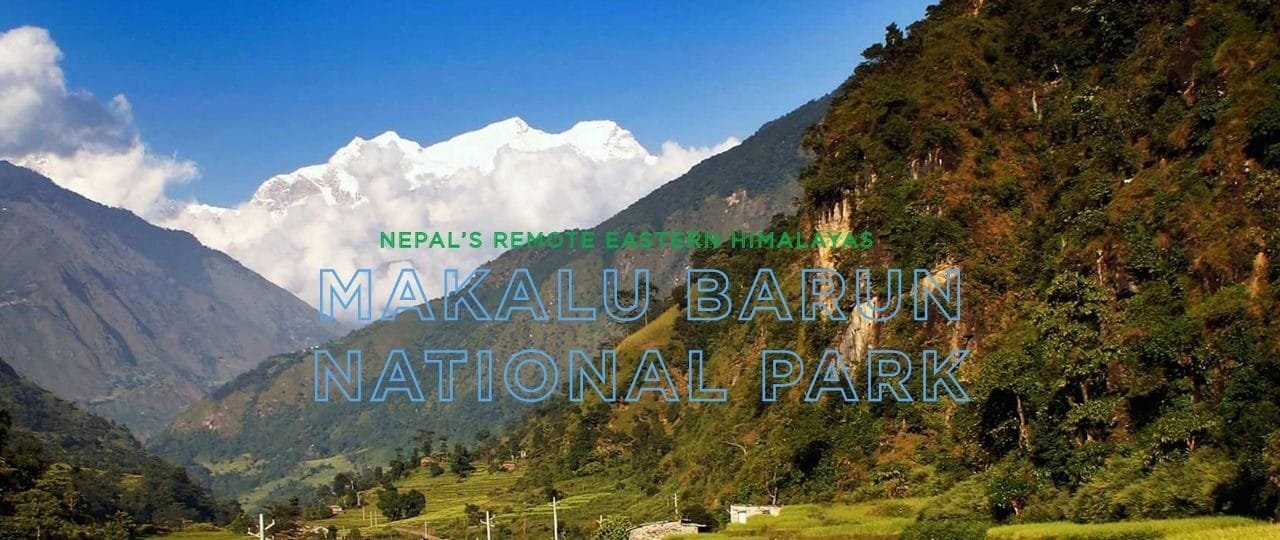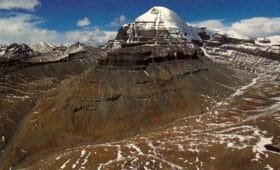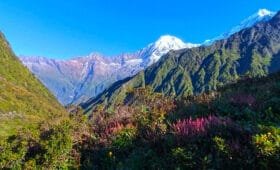The Makalu Barun National Park Trek offers an unparalleled path through one of Nepal’s last pristine Himalayan strongholds. For intrepid travelers, it fuses a glimpse of unspoiled forests, hidden valleys, and the grandeur of Mount Makalu—Nepal’s fifth-highest peak. Along this route, the Makalu Base Camp Trek emerges as a highlight, rewarding dedicated trekkers with staggering views from nearly 5,000 meters, all within the breathtaking realm of Makalu Barun National Park. The Makalu Barun National Park Trek might stand as your ultimate frontier if you crave a remote escape free from crowded teahouse trails.
In this comprehensive guide, you’ll learn everything from the Makalu Barun Trek Itinerary and trek cost to altitude considerations, route difficulty, and how to integrate philanthropic travel with Volunteers Initiative Nepal (ViN). Whether you’re an experienced alpinist seeking new challenges or a cultural enthusiast wanting to see a lesser-known corner of Nepal, the Makalu Barun National Park Trek promises awe-inspiring summits, ancient cultural enclaves, and an authentic Himalayan experience rarely found in mainstream routes.
Introduction
1. Introduction: Why the Makalu Barun National Park Trek?
The Makalu Barun National Park Trek sets itself apart by delving into a largely untouched region of eastern Nepal. Sprawling across ~2,330 km², Makalu Barun National Park shelters varied ecosystems—subtropical farmland at lower altitudes transitioning into lush rhododendron forests and culminating in bleak alpine passes nearing 5,500 meters. The pinnacle is Makalu Base Camp Trek, where visitors stand face-to-face with Mount Makalu’s majestic southwestern face.
Statistic: According to the Nepal Tourism Board, under 3,000 foreigners attempt the region’s routes annually—far fewer than Everest or Annapurna. Such limited traffic ensures a genuine sense of solitude. You might trek days without encountering other groups, immersing you deeper in local Rai, Sherpa, or Shingsawa communities shaped by highland subsistence, seasonal yak herding, and devout Buddhist or animist traditions.
“The Makalu Barun National Park Trek was unlike any I’d done in Nepal—endless valleys with no teahouse crowds, unbelievably dense forests, and a humbling approach to the base of this towering 8,000-meter giant,”
recalls Lara, a 34-year-old trekker from Spain.
Geography
2. Geographic & Cultural Backdrop
Makalu Barun National Park, established in 1992, is named for Mount Makalu (8,463m) and the Barun River. It’s the only protected area on Earth with an altitude range from ~400m in the Arun Valley to over 8,000m at Makalu’s summit. This vertical stretch fosters unmatched biodiversity— from tropical orchids and clouded leopards in lower belts to snow leopards and rare medicinal herbs in the alpine zone.
Makalu Barun Trek Route typically begins around Tumlingtar (~510m) after a short flight from Kathmandu. It meanders through farmland and mid-hill villages before ascending into the park’s wilderness. Cultural highlights revolve around smaller settlements that host a blend of ethnic groups: Brahmin, Chhetri, Rai, Limbu, and, higher up, Sherpa or Tibetan influences. Tales of mysterious beasts, local shamans, and centuries-old monasteries pepper the route with intangible authenticity.
Trek Itinerary
3. Defining the Makalu Barun Trek Itinerary
A standard Makalu Barun Trek Itinerary can span ~18–22 days, culminating at Makalu Base Camp (~4,870m). Below is a representative timeline (~20 days):
Day 1: Fly Kathmandu → Tumlingtar (~285m), drive to Chichila (~1,980m)
A ~45-minute scenic flight. For your first night, a short jeep ride leads to Chichila or a nearby village.
Day 2: Chichila → Num (~1,505m)
~5 hours hiking through farmland, encountering Rai or Sherpa communities. Gradual descent into the verdant valley.
Day 3: Num → Seduwa (~1,530m)
There is a steep descent to the Arun River (~620m) and a climb up the opposite ridge. Seduwa is a checkpoint for Makalu Barun National Park Permits.
Day 4: Seduwa → Tashigaon (~2,070m)
Moderately ascending farmland. Tashigaon is the last major settlement before the more profound wilderness.
Day 5: Tashigaon → Khongma Danda (~3,500m)
Significant altitude gain crossing forested ridges. A strenuous ~5–6 hours day.
Day 6: Acclimatization at Khongma Danda
Explore vantage points. Perfect for altitude adjustment.
Day 7: Khongma Danda → Dobate (~3,740m)
Cross passes like Ghungru La (~4,050m) or Shipton La (~4,220m)— if the weather cooperates, you can catch crisp Himalayan glimpses.
Day 8: Dobate → Yangri Kharka (~3,550m)
Descend into the Barun Valley. Trails can be rugged or muddy after monsoon.
Day 9: Yangri Kharka → Langmale Kharka (~4,410m)
Gradual climb amid meadows, overshadowed by towering ridgelines.
Day 10: Langmale Kharka → Makalu Base Camp (~4,870m)
The highlight: ~5 hours reaching Base Camp. Surrounding snow peaks greet you in a grand amphitheater.
Day 11: Rest & Explore Makalu Base Camp
Potential day-hike to vantage ridges (~5,200+m) or advanced vantage for panoramic sweeps of Makalu, Baruntse, and Everest in the distance.
Day 12–18: Return Descent
Retrace your route or choose minor variations.
Day 19: Arrive Tashigaon/Num
Exiting the park region, re-enter farmland.
Day 20: Return Tumlingtar → Fly to Kathmandu
Buffer days in case of flight delays are recommended.
Makalu Barun Trek Duration typically surpasses two weeks. Some expansions incorporate crossing passes into the Everest region. Others shorten the itinerary if skipping certain acclimatization days, though caution about altitude is essential.
Trek Costing
4. The Makalu Barun National Park Trek Cost
Makalu Barun National Park Trek Cost outpaces typical teahouse routes, given remote logistics, flights, and potential camping. Key expense items:
- Transport
- Kathmandu → Tumlingtar flight (~USD 120–200 one-way). Buses/jeeps for the approach are cheaper but slower and less feasible.
- Permits
- Makalu Barun National Park Permits (~USD 30).
- TIMS (~USD 10–20) if needed, depending on local regulations.
- Guide & Porters
- A Makalu Barun Trek Guide typicall costs y ~USD 25–30/, and p. Porters ~USD 15–25/day. Large groups may split costs among members.
- Food & Lodging
- In lower sections, occasional teahouses exist, ~USD 5–10/night, with daily meal costs ~USD 20–25. Higher-up, partial, or complete camping might be required.
- Misc
- Hot shower (~USD 2–4), device charging (~USD 1–2). Some villages lack any charging or Wi-Fi.
- Agency Fees
- If selecting a Makalu Barun Trek Package, ~USD 1,800–2,500 for ~3 weeks covers guides, permits, partial meals, and flights. The cost is higher if you camp extensively.
A simple approach might be ~USD 1,400–1,800 for 18–20 days, but gear, staff wages, and potential flight cancellations can inflate costs. Thorough planning or an inclusive package helps manage uncertainties.
Trek Map
5. Visualizing the Makalu Barun Trek Map
A Makalu Barun Trek Map typically includes:
- Tumlingtar (~285m): The flight gateway.
- Chichila, Num (~1,500–2,000m): Mid-hill farmland.
- Seduwa (~1,530m): Checkpoint for park permits.
- Tashigaon (~2,070m): The last major settlement before the wilderness.
- Khongma Danda (~3,500m): Acclimatization point.
- Dobate (~3,740m): Approaching subalpine meadows.
- Yangri Kharka (~3,550m) & Langmale Kharka (~4,410m): In the Barun River valley.
- Makalu Base Camp (~4,870m): The apex vantage, overshadowing Mount Makalu’s southwestern face.
Makalu Barun Trek The Distance from Tumlingtar to Base Camp and back is ~150–200 km, depending on expansions. This route crosses multiple ridges, some passing near 4,200–4,500m. A good map or guide knowledge is crucial to navigating forest-laden valleys and high ridges.
Trek Difficulty
6. Evaluating Makalu Barun Trek Difficulty
Makalu Barun Trek Difficulty stands at moderate to challenging. Key points:
- Altitude: Reaching ~4,870m at Makalu Base Camp. Higher vantage ridges can exceed 5,000m.
- Minimal Facilities: Teahouses are fewer as you ascend, forcing partial or complete camping.
- Steep Trails: The climb from Tashigaon to Khongma Danda ( ~1,400m+ gain ) is notorious. The entire route features multiple ascents and descents over glacial valleys.
- Weather: Precarious monsoon or winter conditions hamper passes and complicate flights.
Trekkers require robust fitness, a multi-day altitude trekking experience, plus a day or two for acclimatization. This trek suits seasoned adventurers seeking beyond standard routes like Everest or Annapurna.
7. Makalu Barun Trek Difficulty vs. Makalu Base Camp Trek
Sometimes, the terms “Makalu Barun National Park Trek” and “Makalu Base Camp Trek” overlap. The latter aims explicitly for Base Camp. The entire region, though, belongs to Makalu Barun National Park. If you only want Makalu Base Camp Trek, expect ~18–20 days, focusing on a direct route. Some expansions might incorporate smaller side loops or vantage ridges. Altitude, route distance, and minimal infrastructure define the challenge in both cases.
Weather
8. Makalu Barun Trek Weather & Seasonal Timelines
Given the region’s broad altitude range (~400m near the Arun River to ~8,463m at Makalu’s summit), weather can drastically vary:
- Spring (Mar–-ay)
- Snow recedes from passes, and daytime temperatures are moderate, 10–20°C, around 2,000–3,000m. Nights are sub-zero above 4,000m. Rhododendrons bloom, brightening forest segments.
- Autumn (Sept–Nov)
- Crisp skies, minimal rainfall, stable conditions. Nights near or below 0°C from ~3,500m upward. The busiest time for attempts at Makalu BaIt is the Camp.
- Winter (Dec–Feb)
- Sub-zero across the route above Tashigaon. Snow can blocThis route is o passes like Shipton La. Only recommended for experienced winter trekkers.
- Monsoon (Jun–Aug)
- There is high precipitation in lower altitudes, muddy trails, and leeches in the forest. However, Makalu’s eastern location experiences heavy monsoons, which hamper flight schedules to Tumlingtar.
Hence, the best time to go on the Makalu Barun Trek is spring or autumn. Some advanced mountaineers come during pre- or post-monsoon windows to attempt summits like Makalu itself. Autumn’s clarity and stable weather hold the most significant appeal for most trekkers.
Permits
9. Permits & Paperwork: Makalu Barun National Park Permits
Makalu Barun National Park Permits revolve around:
- Makalu Barun National Park Entry Fee (~USD 30)
- TIMS Card (~USD 10–20)
- Rural Municipality Fees: Vary in certain localities.
- Local Government Checkpoints: Keep your passport/visa copies, plus two passport photos.
Unlike restricted areas like Upper Dolpo, Makalu Barun doesn’t require special “restricted permits,” though advanced expansions linking with other regions might need them. Agencies typically handle the procedures if you purchase a Makalu Barun Trek Package. Keep your original permits on you if park-bound rangers request verification.
Trek Accommodation
10. Lodging & Food: Makalu Barun Trek Accommodation
Makalu Barun Trek Accommodation can be partially teahouse-based, especially from Tumlingtar to Tashigaon, though as altitude increases, teahouses thin out. Past Khongma Danda, many rely on camping. Some bullet points:
- Lower Sections (Tashigaon, Seduwa): There are some basic teahouses or homestays offering dal bhat, noodles, or local produce.
- Mid/Upper Sections: Sporadic huts or communal shelters near passes. Usually, your trekking staff sets up tents.
- Meals: If you’re camping, your cook will prepare houses. Expect simple menus with local favorites (dal band limited Western staples in teahouse staples).
Owing to the route’s difficulty and remote nature, it is wise to carry enough gear, sleeping bags (-10°C rating or better), and some comfort items. Nudges from Makalu Barun Trek Reviews emphasize the route’s limited infrastructure, so plan carefully.
FAQs
11. The Most Frequently Asked Questions
How long is the Makalu Barun Trek Duration?
Typically ~18–22 days to reach Makalu Base Camp and return, factoring in acclimatization days.
What is the Makalu Barun Trek Difficulty level?
Challenging. You’ll cross ~4,000m–5,000m passes, face partial camping, and endure minimal facilities.
How much does the Makalu Barun National Park Trek Cost?
~USD 1,400–1,800 for a minimal approach (~3 weeks). A Makalu Barun Trek Package could be ~USD 1,800–2,500, including flights, staff wages, and partial gear.
Do I need special Makalu Barun National Park Permits?
Yes, the park entry (~USD 30) plus a TIMS card (~USD 10–20). No restricted permit unless linking other restricted areas. A local municipality fee might apply.
When is the best time for the Makalu Barun Trek?
Spring (March) or autumn (Sept–Nov). Winter sees heavy snow, and the monsoon causes flight disruptions and muddy trails.
Is a Makalu Barun Trek Guide mandatory?
It is not legal for the park but is strongly recommended for route navigation, altitude management, and local knowledge.
Which vantage is the highlight?
Makalu Base Camp (~4,870m) is the prime vantage, offering direct views of Makalu’s southwestern face. Some expansions climb beyond 5,000m ridges.
Additional Trek Tips
12. Additional Makalu Barun Trek Tips for Success
12.1 Physical Preparation
- Cardio: Running, cycling, or hiking 4–6 weeks pre-trek.
- Endurance: Weighted stair climbing mirrors Tashigaon–Khongma Danda ascents.
- Altitude Familiarity: If possible, do a shorter 3,000–4,000m trek (e.g., Langtang) previously to ensure your body is comfortable with altitude.
12.2 Minimizing Environmental Impact
- Carry In, Carry Out: This park is remote, with minimal waste disposal.
- Filter Water: Use water purifiers or tablets, avoiding single-use bottles.
- Respect: Keep distance from wildlife, and do not disturb local flora.
12.3 Cultural Sensitivity
Bartering: Remain polite if purchasing local crafts or produce.
Photography: Seek consent before photographing local people, especially in remote enclaves.
Monasteries: Remove shoes and hats and follow local etiquette.
Comparisons
13. Comparisons: Makalu Base Camp Trek vs. Other Nepali Expeditions
While Everest or Annapurna overshadows the Makalu Barun National Park Trek, it boasts:
- Fewer Crowds: Genuine wilderness, deeper cultural immersion.
- Intense Physicality: Some climbs surpass those in the Annapurna region.
- Spectacular Biodiversity: Tropical farmland to glacial passes in a single route.
- Less Commercialization: Perfect for adventurers seeking a raw Himalayan experience.
In essence, if you crave a short teahouse foray, try Poon Hill or Everest View. But for a grand, multi-week endeavor leading to 8,000m footsides, Makalu Base Camp Trek outshines more straightforward routes.
14. Conclusion
From the initial approach at Tumlingtar to gazing upon Makalu’s massive southwestern wall, the Makalu Barun National Park Trek immerses you in an alpine sanctuary rarely traversed. Challenging passes, minimal lodging, and raw natural wonders define this trek. Meanwhile, farmland communities near the lower sections reflect Nepal’s rural tapestry, bridging you into a cultural realm shaped by devotion, resilience, and the primal force of Himalayan life.
Double Your Impact with Volunteers Initiative Nepal
Volunteers Initiative Nepal (ViN) organizes charity trekking and travel tours. If you join their program, all proceeds funnel into community empowerment—doubling your impact. As you conquer the Makalu Barun Trek Route, you simultaneously uplift local families.
- Share: Encourage peers, families, and your social community to adopt philanthropic travel that merges adventure with meaningful local benefits.
- Volunteer: Teach English or healthcare practices in remote enclaves, bridging your expertise with local needs.
- Intern: Combine academic research—like environmental science or sociology—with actual on-ground initiatives.
- Donate: Contribute resources that accelerate education or infrastructure, forging lasting improvements in remote villages.
Namaste—and let your footsteps across Makalu’s stark trails resonate with empathy, forging a future where mindful trekking fosters authentic Himalayan resilience.
Additional Information
Deep Dive: Extended Guidance & Final Inspiration
To finalize your approach, let’s reinforce:
1. Seasonal Outline
- Spring (Mar-May): Warmer weather, leftover snow near passes, blossoming rhododendrons.
- Autumn (Sept–Nov): Crisp vistas, stable conditions. The peak season for Makalu Base Camp attempts.
- Winter (Dec–Feb): Expect harsh sub-zero conditions and closed passes. This season is reserved for seasoned winter adventurers.
- Monsoon (Jun–Aug): Flight unpredictability, muddy trails, heavier precipitation in lower altitudes.
2. Detailed Route Nudges
Some expansions incorporate crossing the 5,160m Shipton La or advanced vantage ridges near 5,500m for panoramic glimpses. Remember to schedule rest or acclimatization days around 3,500–4,200m. The Barun River Valley portion is famously scenic but physically demanding.
3. Potential Hurdles & Solutions
- Flight Cancellations: Tumlingtar flights can be delayed by weather. Keep buffer days.
- Altitude: Over 4,800m at base camp. Proper acclimatization is essential.
- Sparse Infrastructure: Bring your stove and dehydrated meals if you expect partial camping.
- Permit Check: There is no restricted permit for Makalu alone, but local municipality fees or changes can arise. Stay updated via official or agency channels.
4. Post-Trek Options
After completing Makalu Barun, some travelers:
- Explore short cultural tours near Kathmandu or heritage sites in Bhaktapur.
- Evaluate volunteering expansions in other mountainous regions.
- Share experiences on social media or trekking forums, fueling responsible tourism’s growth.
You now understand the trek’s essentials: route structure, cost, difficulty, and how to integrate philanthropic synergy. The Makalu Barun National Park Trek remains an underappreciated jewel, bridging lush lowlands and near-vertical ascents into the Himalayan stratosphere. If raw wilderness, solitude, and a genuine test of resilience excite you, your quest might find a perfect match in Makalu’s lofty enclaves.




